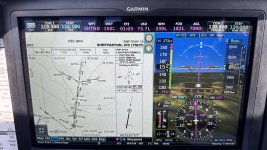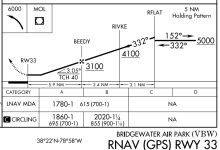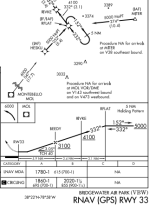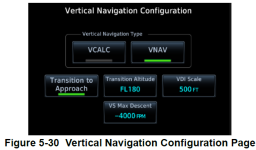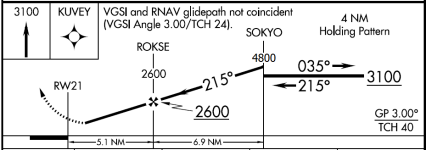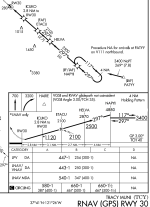All,
Did the RNAV 33 into Bridgewater VA (KVBW) this weekend and the Garmin did something I wasn't expecting , which I may have caused. I forgot to bring home the data card, but didn't want to forget about finding out the why. Here's the situation...
The published approach is just LNAV, but when I put it into the GTN, it came up with LNAV +V. So I thought that the GTN would capture the GS. With the approach armed, as evidenced by the white GS, and in altitude hold from MITER to RFLAT, it didn't capture. I noticed the step down in the fly-thru boxes, but it clearly wanted me to do this manually... by that time, it looked like the magenta ball looked to be sitting at the bottom of the vert speed tape... Then I noticed the autopilot was in PIT mode. Easy enough to dial down the pitch so that the velocity vector was sitting at the beginning of the runway and set power accordingly. Steep descend so I never went below the step downs (circled out anyway).
My questions are:
Thanks,
Did the RNAV 33 into Bridgewater VA (KVBW) this weekend and the Garmin did something I wasn't expecting , which I may have caused. I forgot to bring home the data card, but didn't want to forget about finding out the why. Here's the situation...
The published approach is just LNAV, but when I put it into the GTN, it came up with LNAV +V. So I thought that the GTN would capture the GS. With the approach armed, as evidenced by the white GS, and in altitude hold from MITER to RFLAT, it didn't capture. I noticed the step down in the fly-thru boxes, but it clearly wanted me to do this manually... by that time, it looked like the magenta ball looked to be sitting at the bottom of the vert speed tape... Then I noticed the autopilot was in PIT mode. Easy enough to dial down the pitch so that the velocity vector was sitting at the beginning of the runway and set power accordingly. Steep descend so I never went below the step downs (circled out anyway).
My questions are:
- Should this have captured and flown the +V just like an LPV and I screwed up somewhere? Or are you on your own to dive and drive the step down on a +V, like in a vanilla LNAV?
- How did this get into PIT mode... I'm not sure I even know how to get back into pitch after I have been in any other mode; just deselect all other vertical modes? Is it possible that I double pressed a vertical mode and it reverted to PIT?
Thanks,



